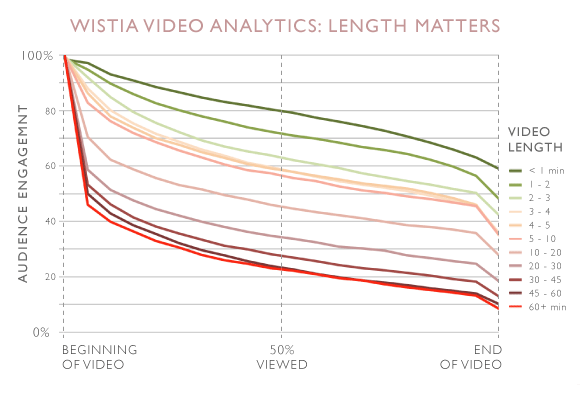If you think that demo videos aren’t worth the effort, or that they’ll be unavoidably dry, boring and sequential, then just think how drab the written replacement will be.
Forcing your customers to wade through hundreds of words of copy – perhaps accompanied by a few to-the-point diagrams – is hardly a compelling way of demonstrating your product at its best. And yet, this is still how many companies choose to deliver this information.
Engagement is always the key concept that all marketers should be focussing on – and personal engagement at that. By necessity, a leaflet or some other written document that describes how a product should be used will be mercilessly soulless as it plods along a (yawn) logical progression from start to finish. Such a thing is invariably un-engaging, totally impersonal, and does nothing to endear your brand with your consumer.
True, demos of any nature need to be informative, but that shouldn’t mean that they be dull.
The Unique Beauty Of A Video Demo
You could be the best writer in the whole world, but, even if you are, no words that you put to paper are ever going to connect with the same exactness than they will if you are able to look your customer in the eye and say them with your own mouth.
Naturally, you will probably be your product’s biggest fan. You believe in it, you enjoy using it, and you can barely understand how you’ve managed to live your life thus far without it. And all of this will glow enthusiastically from your beaming face when you look directly at the camera and kindly guide your customers through the ins and outs of how you intend your product to be used.
Enthusiasm is infectious, and the simple act of creating a demo video can deliver that often elusive personal connection that people crave and trust – albeit subconsciously – when shopping online.
What Is A Demo Video?
Just so there’s no confusion before we go on, demo videos and promotional videos are not the same thing. Sure, your promo will most likely demonstrate your product in action at some point, and, similarly, your demo will have been constructed to promote the use of it. But, importantly, this is just an overlap of the mediums, and you should always be clear about what you are striving to achieve every time you shout ‘Action!’ or get creative in the editing room.
In the most simple of terms, the purpose of your demo video is to teach your customers how to accomplish something with your product. In a nutshell, that’s it. Remember that users will be searching specifically for your video (or a similar/rival one), and so what they will primarily be after is information. It’s quite likely, in fact, that many visitors will have already purchased your product, and are simply looking for some guidance or inspiration in how to use it. Therefore, you shouldn’t waste time or risk irritating these visitors by preaching to the converted. Instead, keep your demos to the point, walk your visitors through the advertised action, do it enthusiastically, but do it concisely. For one thing, showing how quick and easy it is to use your product is a great advert in itself.
Some Cool Quotes And Encouraging Figures
“More than 100M hours of how-to content have been watched in North America so far this year.” That’s a quote that comes straight from Think With Google, published 5 months ago in May this year.
And here’re some more encouraging statistics from the same post:
- 91% of smartphone users turn to their device for ideas whilst completing a task
- Searches related to “how to” on YouTube are growing 70% year over year
- 67% of millennials agree that they can find a YouTube video on anything they want to learn
- Nearly 1 in 3 millennials say they’ve purchased a product as a result of watching a how-to video
Today, we live in a world where the everyday person simply expects to be able to find out exactly how to achieve something by Googling it – I know I do. And when I head online and start my search for information, I will much prefer it if I can find what I’m looking for provided by the very brand that I bought the product from. For me, this way I feel sure that I’m getting trustworthy instruction – especially if I can watch a demo video that the firm has produced. (I do this quite a lot, actually. When I’m not writing blogs or making Shakr videos, I’m actually a keen home cook who’s a little unhealthily partial to a cool kitchen gadget. My brand of choice is Kitchen Craft, and their YouTube channel is a favourite haunt of mine for learning how to use their stuff (and inspiring me to buy more!!))
How To Create Killer Product Demo Videos
Ok, enough chit-chat. Let’s knuckle down into the really useful stuff. Personally, I think that every demo video should be uniquely conceived, to uniquely reflect the unique product that is being demonstrated. As such, I’m not going to so much give you a step-by-step tutorial to follow, but rather a set of guiding principles that should be adhered to when going about crafting a demo video. You’ll find them below…
#1. Do Your Homework – What Do Your Customers Want To Know?
You will get nowhere if you just jump straight in without conducting a little market research beforehand. So, turn to your social networks. What are the most common questions or quandaries your followers have when using your product? What do people want to know most about it? Find this out first, and then make your video(s) directly addressing the existing needs of your customers.
#2. Always Write A Script
Your script will be the most important part of the whole video production, which is actually ironic as it is perhaps the one element that viewers won’t get to see. If your customers were going to come into your store, then you would have the chance to slowly walk them through how to use your product, answer any questions as you go along, and even let them have a try. With a video, none of this possible. So, you need to write a script that cuts out all the fat, answers all the questions that your consumer could possibly have, all the while inserting as much enthusiasm into your words and your tone as possible. If you’ve got the gift of the gab, then you might think that you can pull this off much more convincingly without a script. However, you are bound to forget something if you do this, and, besides, having ‘the gift’ is all about reacting to real-time situations and questions, whereas making a video is all about creating something that’s thoughtful and built to last. At the very least, you need to write out a bulleted list of the most important points and ensure that you hit every single one.
#3. Hook ‘em Quick And Keep It Short
The digital generation has become rather impatient with our online pursuits – even the relatively passive activity of watching videos can evidently be a little too laborious for us. Check out this graph from Wistia, which shows how viewers’ attentions drop soon after a video starts.

What this data reveals is that 80% of the viewers who watch the first 12 seconds of your video will continue to watch it until the 70 second mark, which means that if you can hook ‘em quick, then you are buying yourself extra time to demonstrate/promote your product.
#4. Avoid High Information Density
Don’t be tempted to try and cram in every function of every feature of your product into one 90-second video. It’s too much, and you will lose your viewers’ attention. Even if you’ve created a highly complex product with more tools than a Swiss Army Knife, don’t spill all the beans all at once – you can always make another demo video, but, usually, once you’ve scared off a prospect or customer, you won’t see them again.
Just stick to 1, 2 or 3 of the features per video. This way you will stand a better chance of striking a decent balance between useful information and engaging delivery.
#5. Always End With A Call To Action
If you’ve managed to grip a viewer all the way to the very end of your product demo, now you have to strike while the iron is hot and try and capture a conversion before they surf away again. One of the great things about demo videos is that they are inspirational. They will be inspiring your customers to go away and use your product, and also inspiring them to have confidence in you and your brand. Put simply, at this moment in time, the viewer is feeling pretty positive about you – so capitalise on this interest and strike again.
They may well already own the product that you have been demonstrating, so don’t feel like your only option is to try and sell it again. You can still score if you get them to watch another video, sign up for a newsletter, follow you on Twitter/Instagram/Facebook/YouTube/etc., activate a free trial, organise a business consultation, or just simply like, share or comment on the video. Whatever it is you want your viewers to do next, always sign off by asking them to do it. Remember, that the end of your video needs to be as convincing, engaging and memorable as the start. So, once you’ve decided on the action that you want your viewers to take, make sure that you give them every reason to complete that process at the end of your video.
Got any more tips for creating great product demo videos? Please share your thoughts with us in the comments below.


